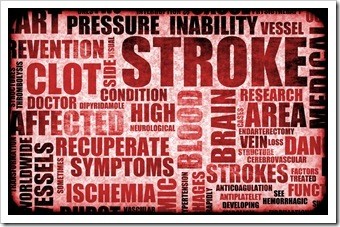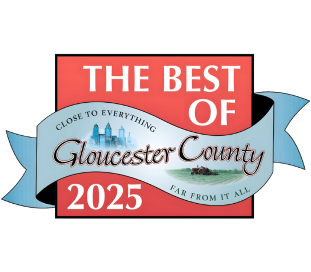What You Should Know About Stroke Before it is too Late!
by Dr. Barry Coniglio
Read What You Should Know About Stroke Before it is too Late! by Dr. Barry Coniglio to learn more about Coniglio Chiropractic Wellness Center and our Chiropractic office in Mantua, NJ.
We look forward to serving you! Call - 856-468-4200.

More often than not, stroke is suffered by older people, although they can strike at any age. Risk factors for stroke include poor diet, smoking and lack of exercise. More specifically, stroke is more likely in the obese, those suffering high blood pressure, heart disease, diabetes, those who abuse alcohol, or have a family history of stroke or abnormal heart rhythm. It is also far more prevalent in African-Americans. In the U.S., strokes cause more disability than any other condition, and are the third most common cause of adult death.
What Is Stroke?
Stroke, which is also known as ischemia, happens when blood fails to reach a certain part of the brain in sufficient quantity. This causes that part of the brain to die in a few minutes, and if death does not occur, then long-term neurological effects can result because brain cells do not regenerate.
The exact outcome of stroke is dependent on the individual – their age, overall health, type of stroke, specific part of the brain affected, and the extent of the damage. However, most stroke result in symptoms that include difficulties with speech and movement (including weakness and paralysis), poor memory, amnesia, emotional changes, and deformity in the extremities. Often only one side of the body is affected, which is the opposite side to where the stroke occurred in the brain. Effects can be permanent or some may be improved with time and treatment.
Warning Signs of Stroke
A transient ischemic attack, or “pre-stroke”, can be a precursor to full-blown stroke. This is a short-term lack of blood to the brain that last a few seconds and does not cause any permanent damage, but is a serious issue in what it may portend. Therefore it requires immediate investigation. Besides this, ANY of the following suddenly-appearing symptoms must be taken very seriously:
- Slurred speech, difficulty speaking or understanding what is being said
- Confusion or altered mental state, such as loss of consciousness or failure to recognize familiar people
- Numbness or tingling on one or both sides of the face or body
- Dizziness, loss of balance, lack of coordination
- Difficulty walking or standing up
- Severe headache
- Severe upper-neck pain that cannot be explained
- Vision problems
Procedure following any stroke symptoms
Medical care should be sought immediately if any of the above symptoms are manifest in you or someone with you. Remember: The sooner you seek emergency medical care, the better the outcome for the affected individual.
- Dial 911 or get the affected person to the nearest emergency room as soon as possible. The affected person must not be allowed to drive or refuse to seek help
- Note what the symptoms are and when they began, so the treating physician will have a better idea of how to proceed.
Emergency medical care should be sought even if:
- Only one symptom is evident
- The symptoms last only briefly
- There is no pain attached to the symptom
- The affected person denies there is a problem
Treatment for Stroke
Stroke is treated in a three-stage process: prevention, immediate post-stroke care, and post-stroke rehabilitation. Prevention is concerned with reducing the aforementioned risk factors. Immediate care following stroke involves attempting to minimize the effects, including the use of anticoagulants to help break up any blood clots and guard against any more forming, and providing treatment to maintain basic bodily functions. Post-stroke rehabilitation is designed to lessen the impact of any resulting disability, and will include physical therapy, occupational therapy, and speech therapy.
Does Chiropractic Neck Manipulation Increase Stroke Risk?
Some reports have linked high velocity upper neck manipulation with a certain type of stroke, or vertebral artery dissection. Figures are not precise, but based on clinical reports and scientific studies to date, stroke from high velocity upper neck manipulation is considered to be an extremely rare occurrence, and this kind of manipulation is therefore seen as very safe. Nevertheless, the chiropractic profession continues to research stroke and identify alternative therapies that are both safe and conservative.
One of the reasons why this link has been made is that victims of this kind of stroke often seek the attention of a physician or doctor of chiropractor when they experience sudden and severe upper-neck pain and/or headache, only to experience the final mortal effects of the stroke with the confines of the doctor’s office. In reality, sufferers of vertebral artery dissection generally have a predisposed weakness that often finds them out in such everyday circumstances as looking upwards, head movements while driving, or extending their neck back over a basin at a hairdresser’s salon. The resulting aneurysm causes the warning signs that lead the sufferer to a doctor, and then a stroke ensues.
It is therefore crucial that you be as detailed as possible about the symptoms of any upper-neck pain or headache when visiting your doctor of chiropractic, so that the safest and most effective treatment can be administered, or so that referral can be made to another healthcare professional. Remember that high velocity upper neck manipulation is only one small option within the gamut of chiropractic care; depending on your condition, the recommendation may be for joint mobilization, therapeutic exercise, soft-tissue techniques, or various other therapies. Don’t be afraid to talk to your doctor of chiropractic if you feel you need to discuss the issue of stroke.
For Your Health,
Dr. Barry Coniglio





